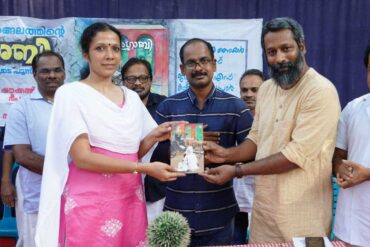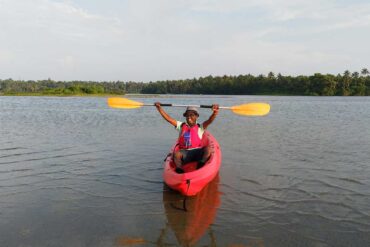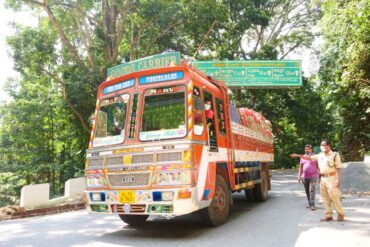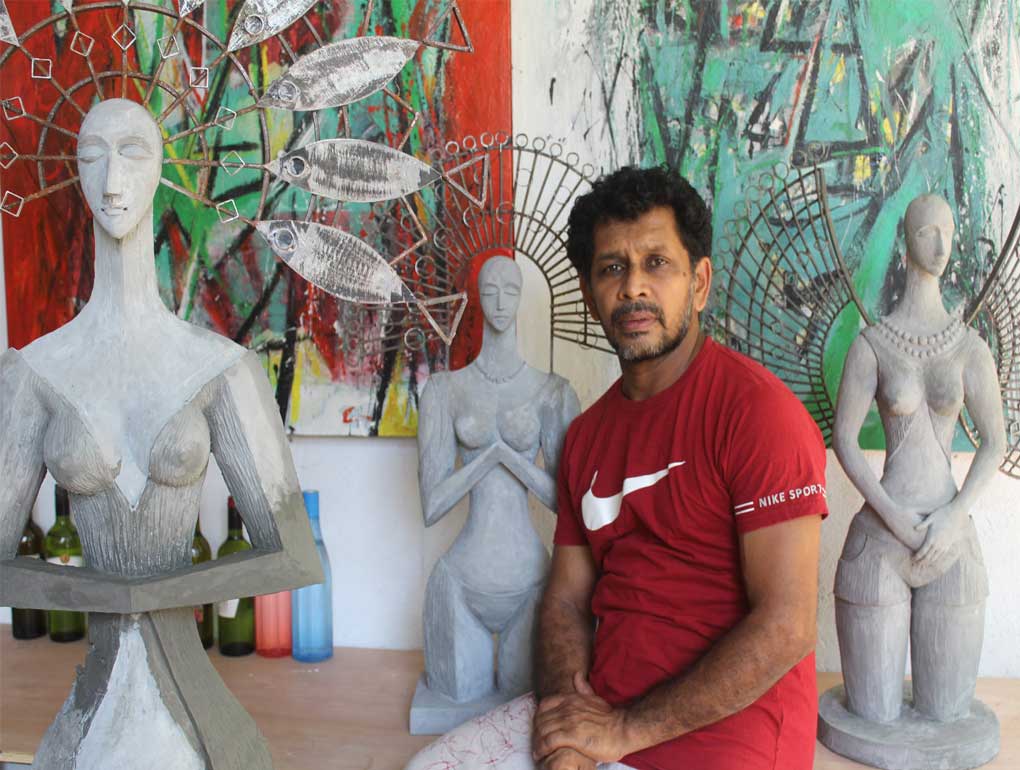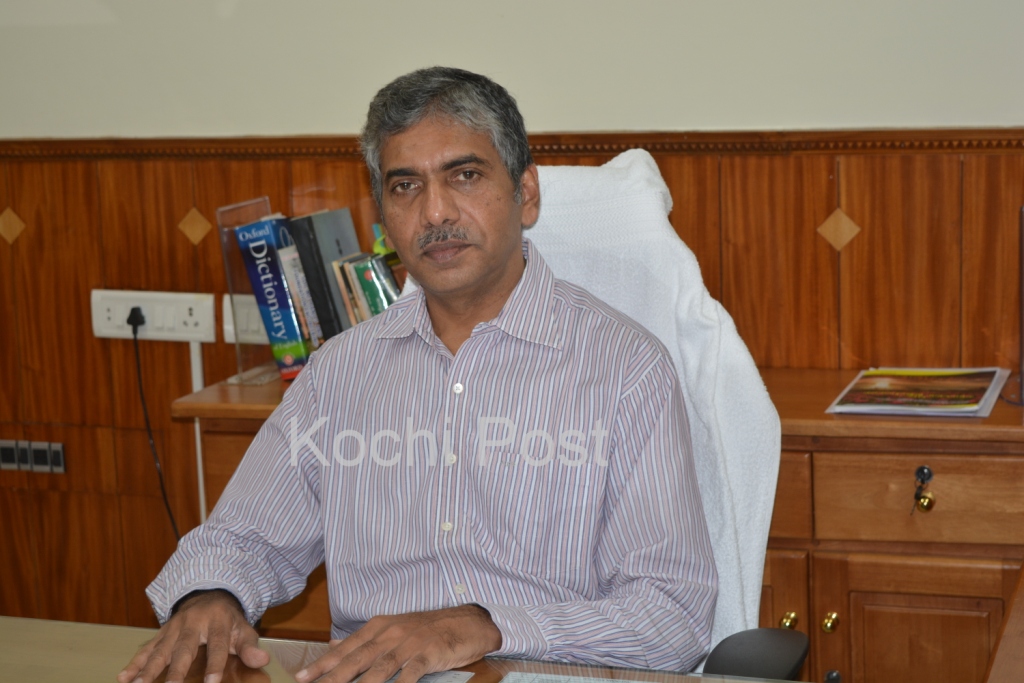On a recent morning, Sri Lankan artist Dr Manoranjana Herath steps back from a 4’ tall sculpture, made of cement and iron, he has just completed at his studio in Colombo. It shows a bald-headed woman with her hands clasped together in front of her. She has large butterfly-type wings attached to her shoulder. This is the seventh in a series called ‘Princess Of My World’. “This series is to show my appreciation of women,” says Herath, who is a senior lecturer at the University of Visual and Performing Arts. “They also have a desire to fly and achieve their dreams. But many times, they have to face obstacles and tragedies.”
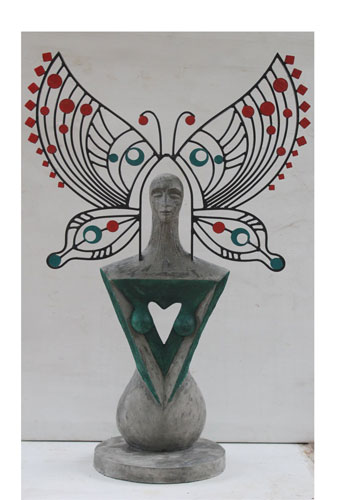 “I do abstract paintings, too,” says Herath, who had come to Kochi before the lockdown.
“I do abstract paintings, too,” says Herath, who had come to Kochi before the lockdown.
The abstract works were inspired by Herath’s visit in August, last year to the Sinharaja Forest Reserve, a UNESCO World Heritage Site in Southern Sri Lanka. Owing to the monsoon rains, he could feel the sodden leaves under his feet. The air was crisp, and there was a canopy of vivid green. The twitter of birds added to the sense of tranquility that he felt.
“When you observe Nature closely, you can see uncommon patterns, shapes, colours, rhythms and textures,” says Herath. “I tried to reproduce that on the canvas. I have also used the original prints of leaves and applied some colour on it. What I want to say is that we are all part of Nature. So, we have to protect it.”
Herath’s wife Dilini Perera is also an artist. In one work, she has drawn a dusky-skinned woman, with blue eyes, large flowers in her blue hair, and wearing a pearl necklace, against a backdrop of water, with fishes in it. “An acrylic on canvas, this is a poetic version of a woman,” says Herath, whose wife did not come to Kochi. “Dilini does stylistic images. So far, she has held two exhibitions and many group shows.”
The couple met in college, fell in love, got married in 2000, and have two sons, Akalanka, 18 and Aloka, 13. Asked whether it is difficult for two artists to live together, Herath smiles and says, “We get along very well. There is a better understanding because of our mutual passion for art.”
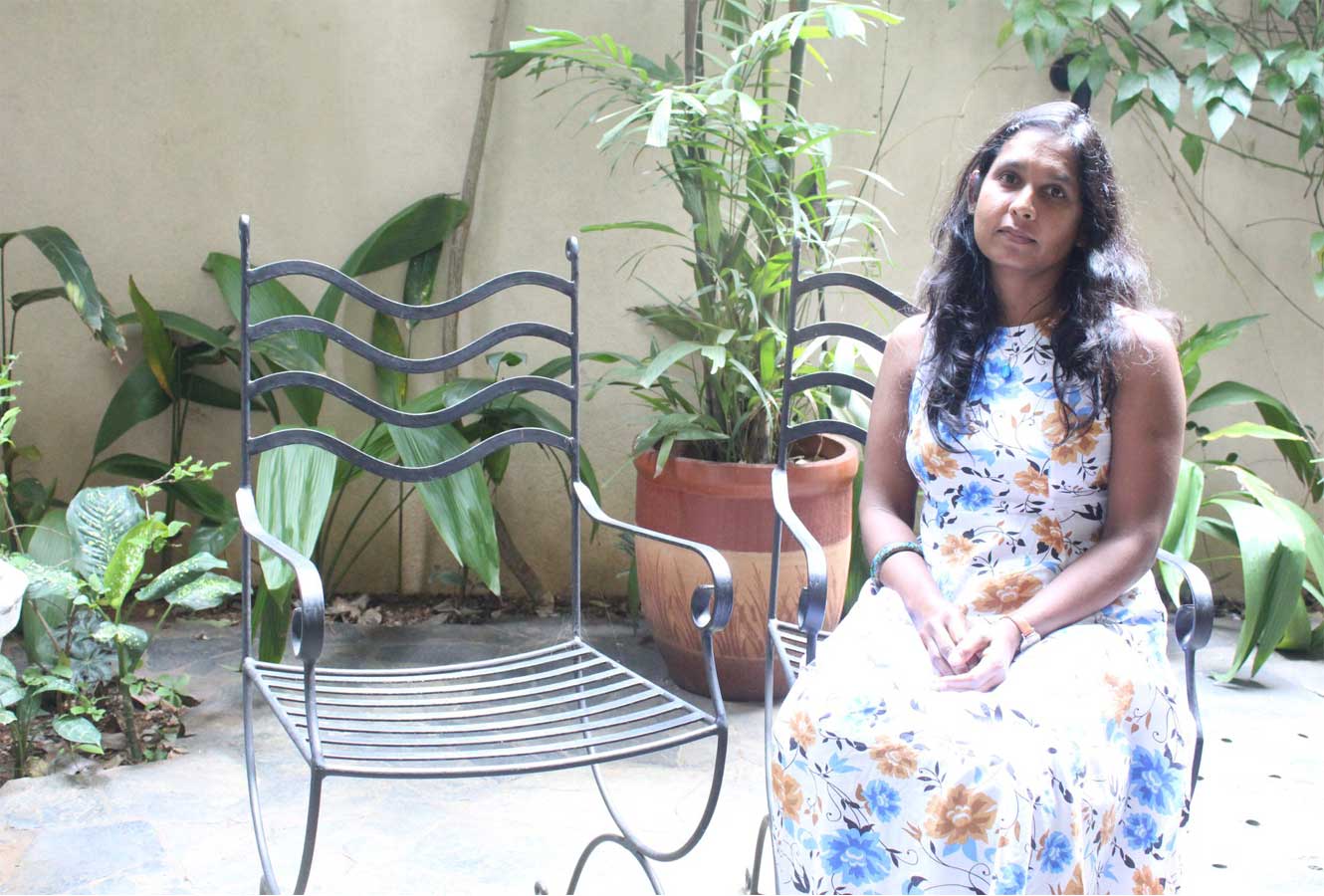
However, Herath is frank enough to say there is not much of an audience for art in Sri Lanka. “For the inauguration of any exhibition, there will be only 30 to 40 people present,” he says. “And most of them will be friends of the artist.”
Herath came to Kochi at the invitation of his friends Girish Kalleli and Lekha Vylopilly. “Two years ago, I had asked Lekha, ‘Can we do something?’ And that has borne fruition now,” says Herath. “I love to travel. Artists should always meet new people and places. But this is the first time I am coming to Kerala.”
Asked about the impact of the two-decade-long civil war on the sensibilities of artists, Herath says, “There are a few artists who still focus on the sufferings borne by the people. For me, the war is history. I don’t want to hurt people through my work. People are suffering everywhere. So I don’t want them to feel depressed when they come for an exhibition.”
As for the relations between the different communities, Herath says, “Many people only see through the lens of their religion or community. Then it becomes a problem. Some people talk about how the Sinhalese are the majority, while the Muslims and Tamils belong to the minority. As an artist, I believe we are all human beings. There is a common humanity. So we should accept everybody. Once upon a time, we had lived peacefully with each other. I hope that day will return.”

